Wednesday 4th July to Wednesday 11th July 2018
From Vanua Balavu we set sail in the morning for the 120 mile overnight sail southwest towards Totoya, one of the less visited of the Fijian islands. We said goodbye to our fellow cruisers, two of the other boats going south and two west, and headed off on our own.
Totoya
Totoya is a small, horseshoe-shaped island of volcanic origin, with the crater flooded by the sea to create a central lagoon just over two miles in diameter and open to the south. It is surrounded by coral reef and we entered through a gap in the reef on the west side and dropped anchor in a bay on the outside of the island. We had read that the central crater was deep and difficult to anchor in, as well as being exposed to the southeasterly winds. There are four villages all facing onto the lagoon. It is an isolated island where the people make a living from fishing, weaving mats and copra, with only cassava, yams and sweet potatoes growing well in the poor soil. The supply ship comes once a month and there is no mobile phone signal here.
When we arrived in the bay we could see some people waving at us from the beach and young children running around. The bottom was sandy but there were many coral bommies on which our anchor chain would likely get snagged. We spent ages motoring around looking for a large enough patch of sand to drop the anchor in, as our audience on the beach waited expectantly.
When we finally got the dinghy and outboard set up and motored across the extended family was gathered to meet us. The eldest man owned the land on which they were harvesting copra (dried coconut) and so, since the nearest village was a long dinghy ride away, we presented our cava to him and did sevusevu. They seemed very happy to chat and took us through the copra plantation to look at the wind-swept lagoon, their own village being a boat ride away across the other side of the lagoon.
The wind gusting around our bay was repeatedly turning Vega through 360 degrees, so by morning our anchor chain was twisted and tangled around the buoy that we had attached to it to suspend the chain above the seabed and so prevent it getting caught around the coral bommies. We decided to move on to the next island, Matuku, before it got any worse and spent a good hour untangling the chain before we could raise the anchor. It was a four hour fast and very bumpy sail another 26 miles further southwest.
Matuku
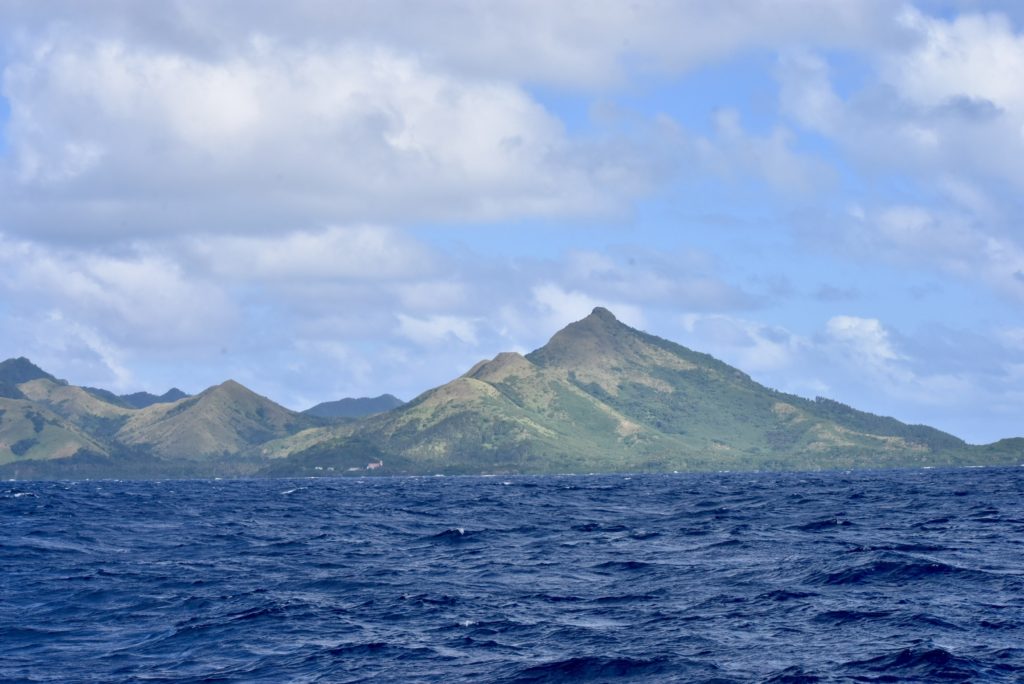
We approached the island from the west through a gap in the reef and followed a tortuous route in using waypoints I’d obtained from one of our online guides into a sheltered bay surrounded by high hills, next to the small village of Lomati. After a while the village chief Jiko (pronounced Chico) came by and agreed we could do the sevusevu ceremony with him the following morning.
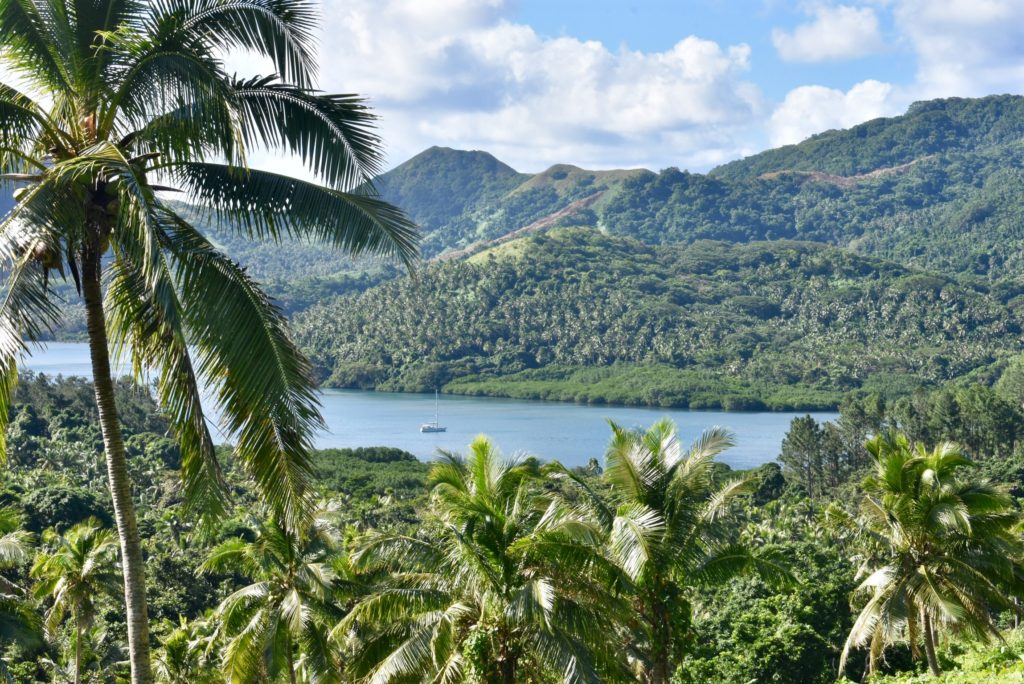
At the welcoming sevusevu ceremony the next day chief Jiko only just managed to stay awake long enough to accept our kava, say a short prayer and clap his hands three times. After he heard we had no whisky on board for him he nodded off to sleep. He had been up late drinking grog and up early that morning to meet the supply ship.
We met Jese who was to be our guide. He was wanting to develop services for visiting yachties such as trekking and guiding to snorkelling and dive sites, but told us that in the past had had a lot of opposition from some villagers.
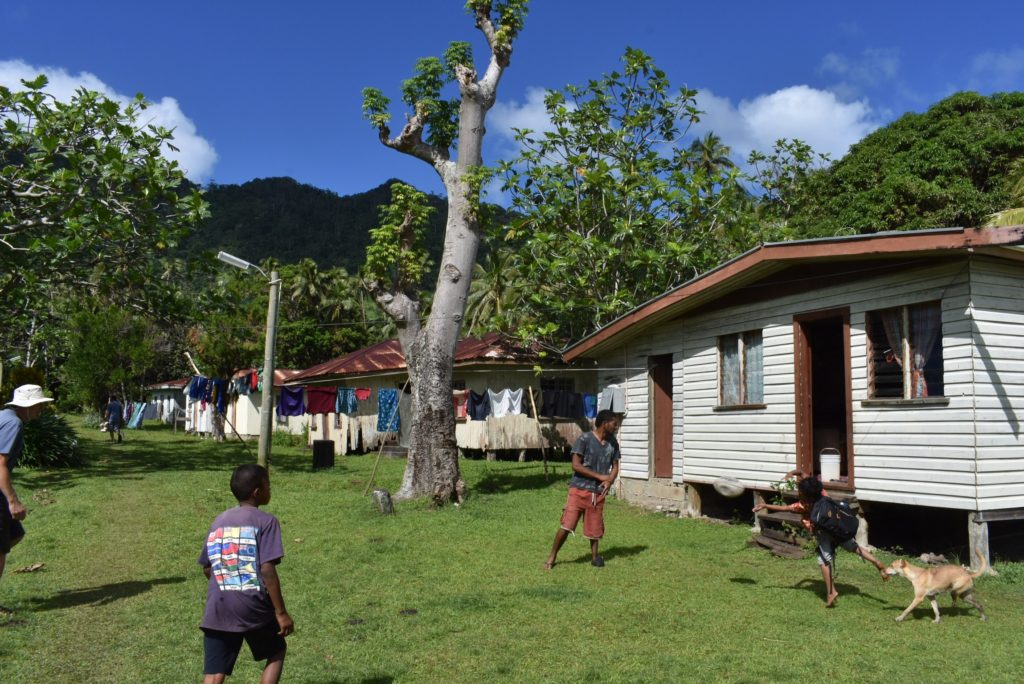
We were keen to explore and get some exercise and Jese was keen to guide us. The road to the next village had been built by the Fijian government despite there being no cars on Matuku – which is just as well as the ‘road’ was overgrown and, as it climbed to the top of the ridge between the villages, it petered out into a narrow stony track. He introduced us to one of the four families living in the village. The parents had just returned from Suva the capital where she had given birth to a baby boy, their fifth child. Pregnant women spend the final three months of their pregnancy in Suva, staying with family there (everyone in Fiji has a relative living in Suva) as the medical facilities on the islands are so rudimentary. The youngest child had gone with them, their school age children remaining behind with other family.
We sat in the shade with the men drinking tea made from a green lemon-like leaf in hot water and eating Punjas Breakfast Crackers (ubiquitous in Fiji).
Two of the young men were pounding the dried kava root to a powder from which they would make grog. Hugh had a go with the heavy iron rod, which seemed to amuse them.
On the way back Jese climbed a coconut palm tree and cut down green coconuts for us. Cutting the top off produced delicious coconut water to drink and then splitting them open we could scoop out the soft flesh with a spoon made from a sliver of husk.
Back in the village Jese gave us a handwoven banana leaf basket filled with vegetables from his own garden high up on the hill above the village – tomatoes, pak choy, aubergines and cucumbers. It is always hard to know how to thank such generosity as it is not the Fijian way to ask for anything in return, or to agree a price for such services or gifts. We ended up giving him some cash and some pens and drawing pads for his children. We are often asked for boat parts and fishing equipment by passing locals and as our stay progressed in Lomati we were asked if we could buy a coconut scraping machine for the village to use to make virgin coconut oil. The chief also asked us to get him a new propeller for his outboard and fibreglass resin for his boat (this request did not go down so well with the other villagers as it would not benefit the whole community). Many yachties will help villages by mending broken equipment and providing computing or electronic expertise.
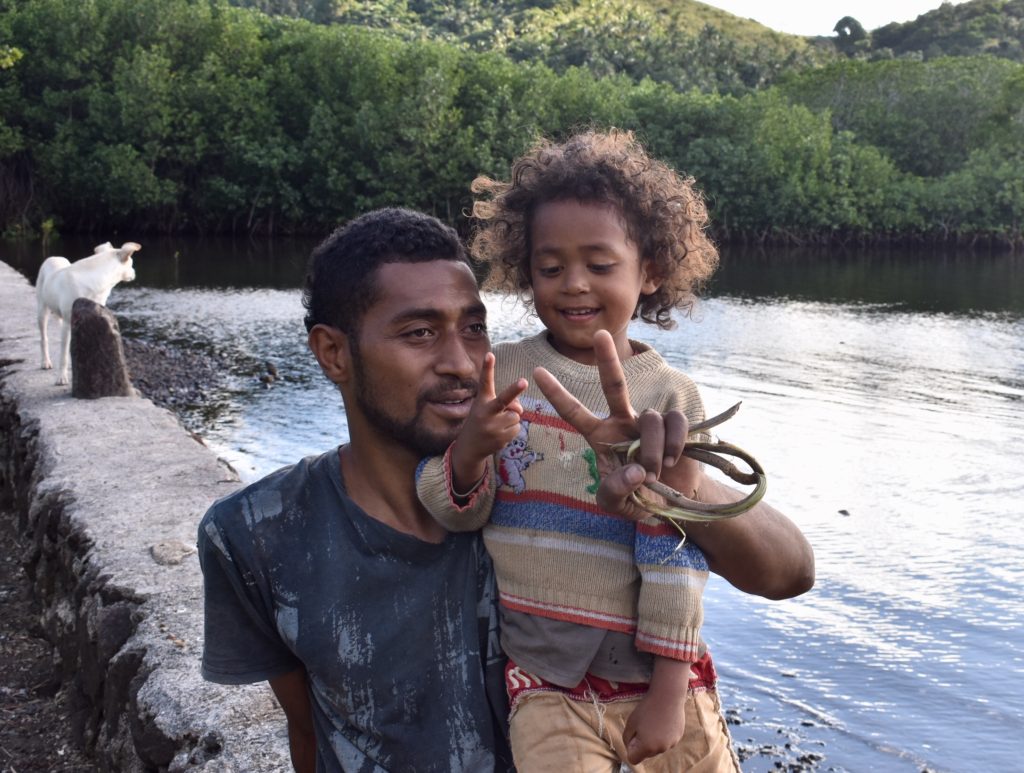
We attended church on the Sunday, with the best singing we had heard yet, and were given lunch afterwards at the mayor’s house: fish prepared several different ways, taro, cassava and… corned beef.
The following day I joined the women in their mat weaving in the Community Hall. They were busy weaving a large mat made from the palm-like leaves of pandanus plant, which had been boiled and dried, then split into long strips. A mat may take up to a week to make but can last ten years. As they weave they chat and laugh. They all speak excellent English but as much of the best gossip was in Fijian I had to keep asking them to translate. After being supervised for a while I was allowed to carry on weaving my small area of the mat by myself.
In the meantime Hugh had gone off with Jese to try to recover his outboard engine that he had accidentally dropped overboard in the bay two months ago, in 30 meters of water. When Jese heard we had scuba diving equipment on board it was clear he hoped we’d help him find it. Hugh wasn’t at all keen on either of us going down in 30 meters of muddy water, but Jese’s cousin in the next village was apparently an experienced diver so he would use our equipment to look for it.
The weaving ladies explained how the outboard in fact belonged to the village and the villagers had not been at all happy when Jese lost it. A previous yacht had also dived to look for it but failed (Jese had not told us this and in Jese’s version of the story he personally had been given the engine by a visiting yacht. So even Paradise has its share of conflict).
To cut a very long story short (see Hugh’s blog for the long story), a couple of hours later the diving party returned to the village looking extremely pleased with themselves and carrying a very muddy outboard engine.
We had felt very welcome in Lomati, had been given meals and vegetables, joined in a pig catching, snorkelled on the reef, entertained the chief, his children and the local schoolteacher on Vega and enjoyed peaceful evenings at anchor in the bay watching the women fishing from their small boat. Most of all we had felt a great warmth and friendliness from the lovely people in the village.
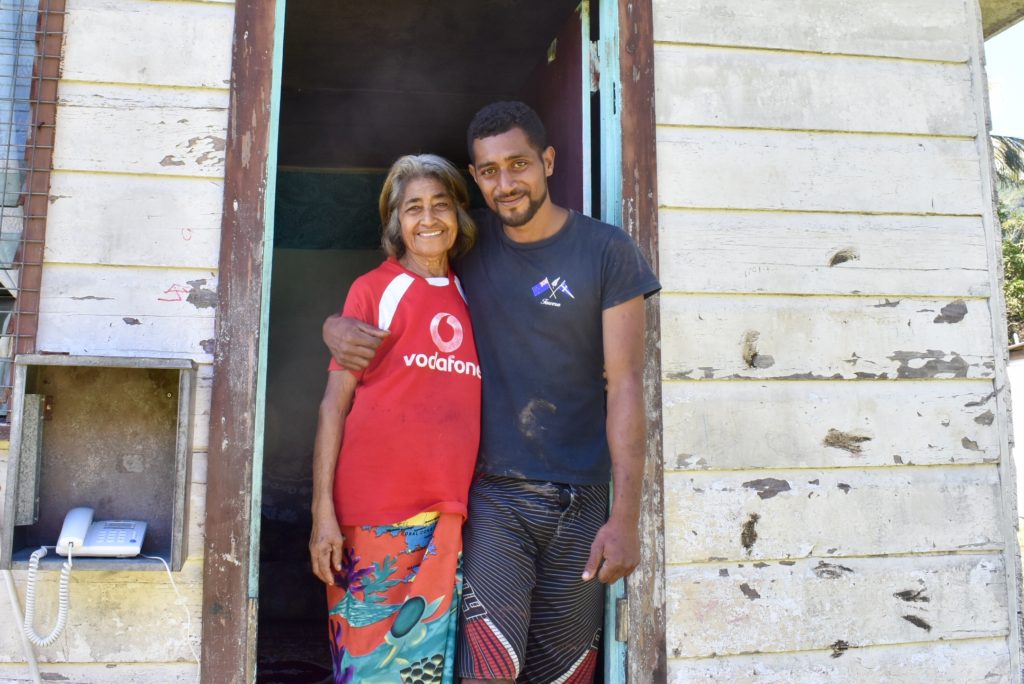
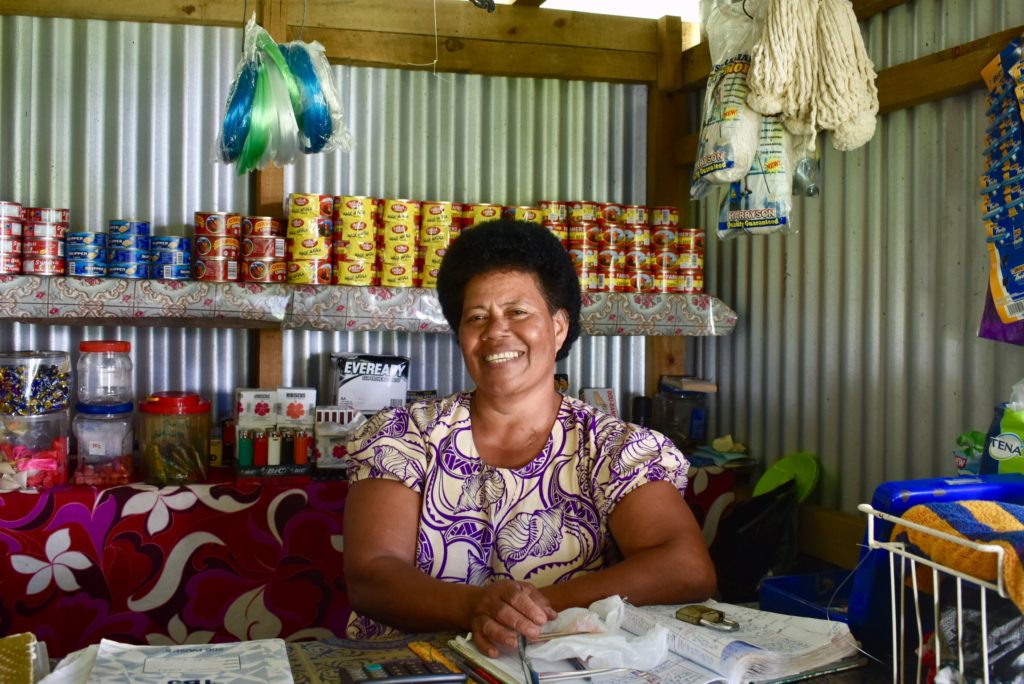
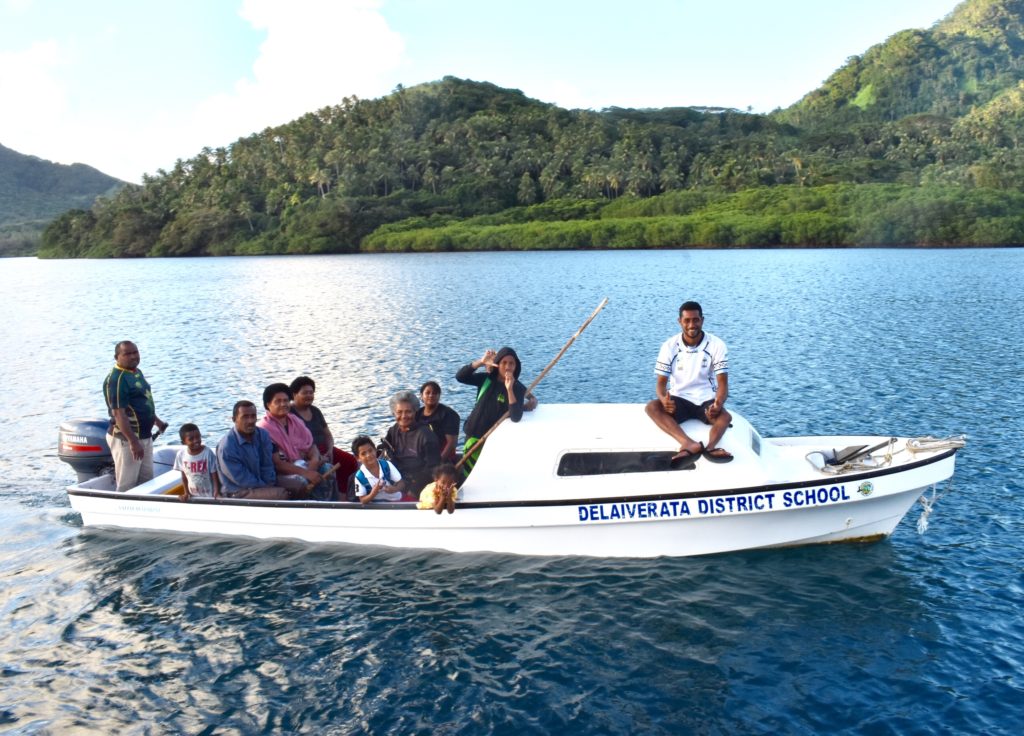
After a week here we sadly left for an overnight sail west to Kadavu and the Great Astrolabe Reef.

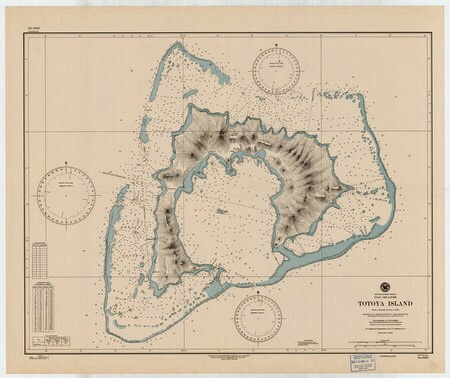
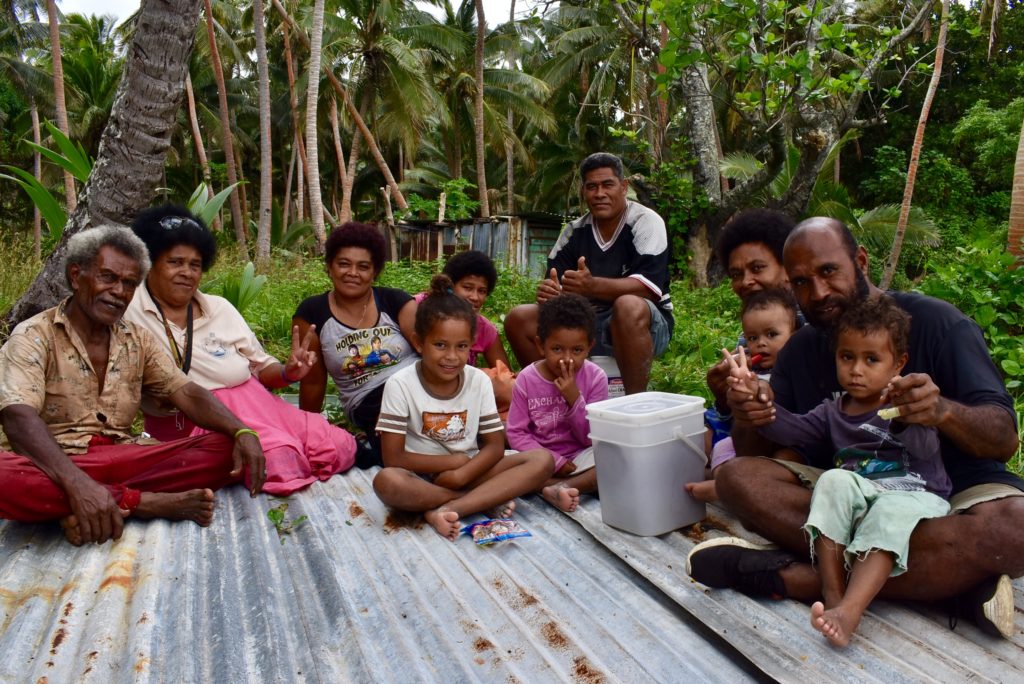
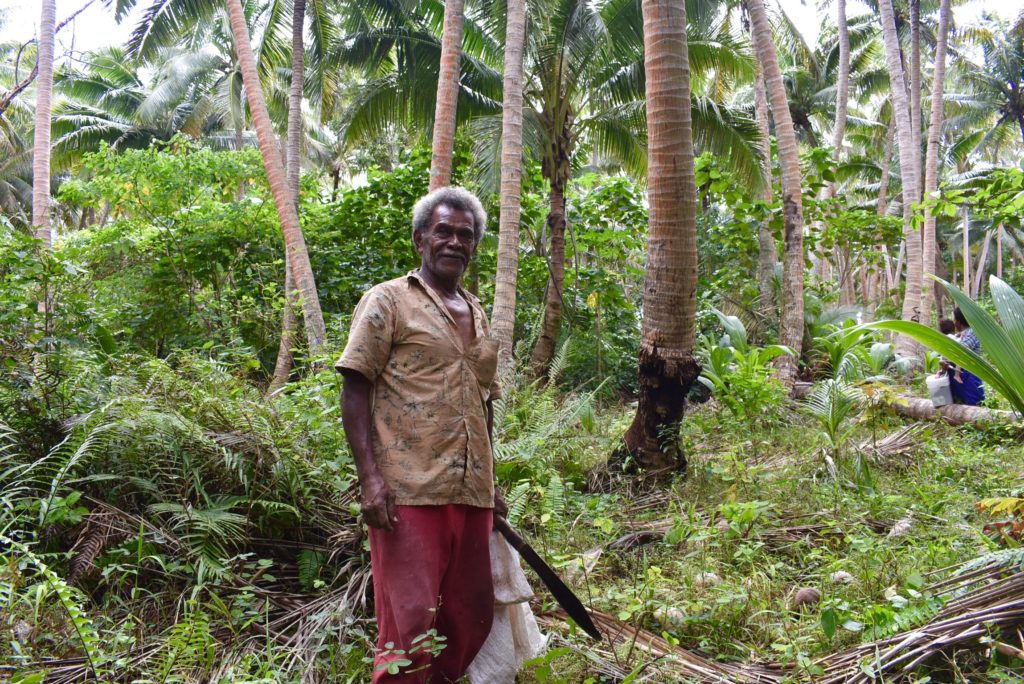
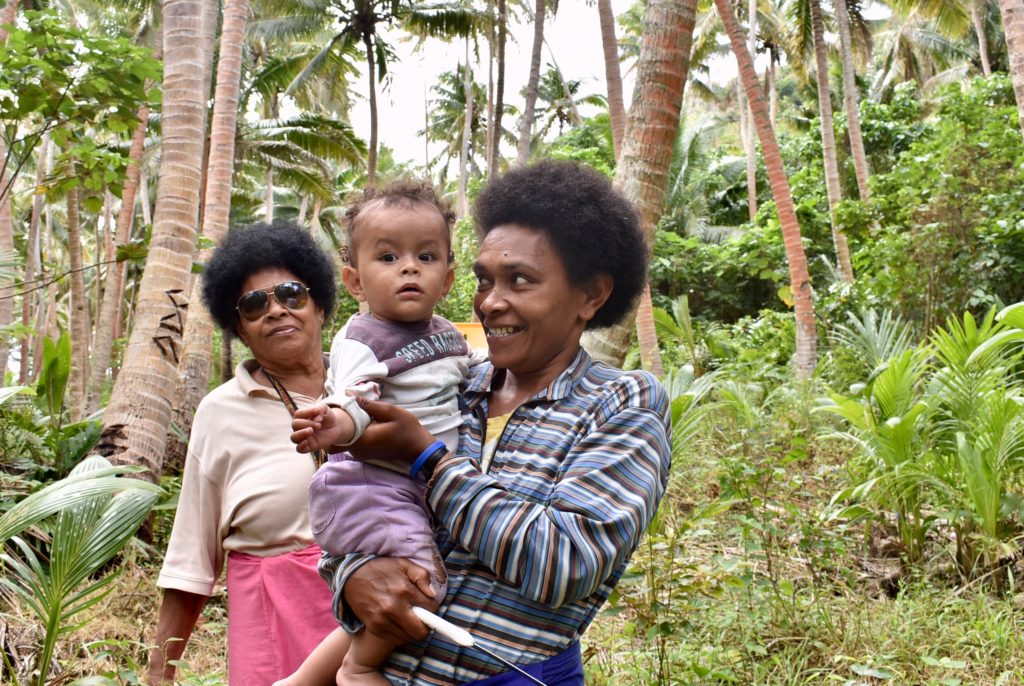
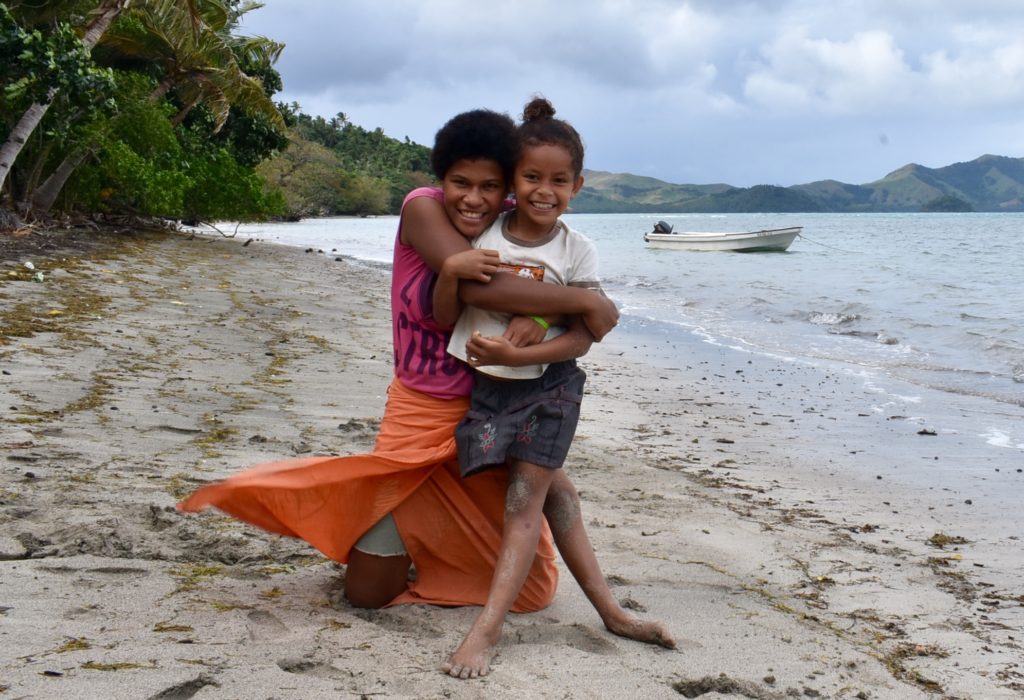
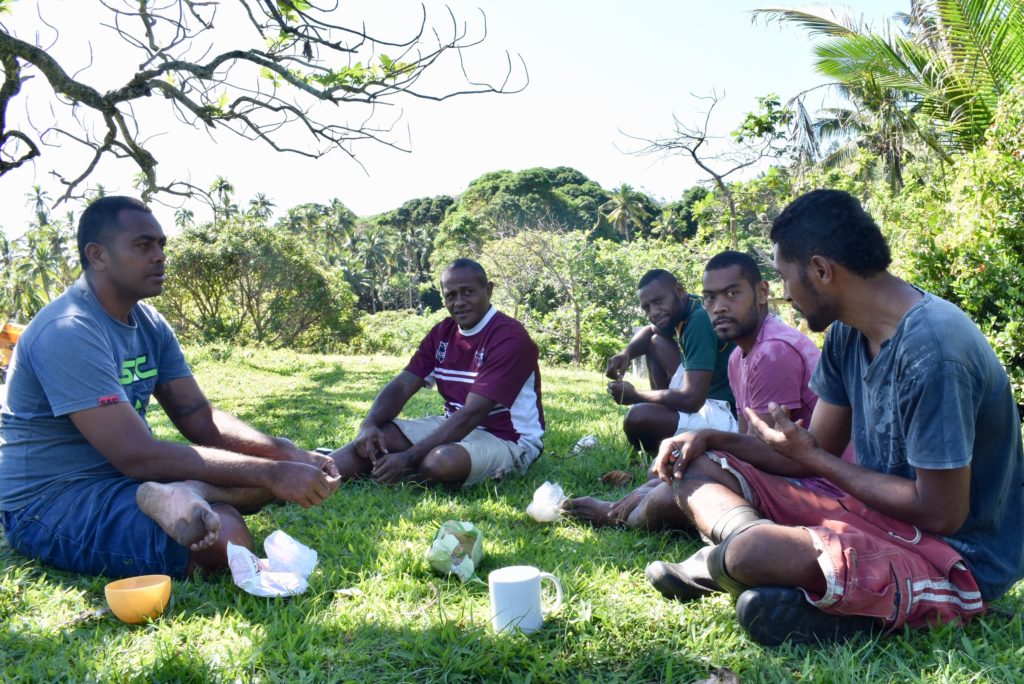
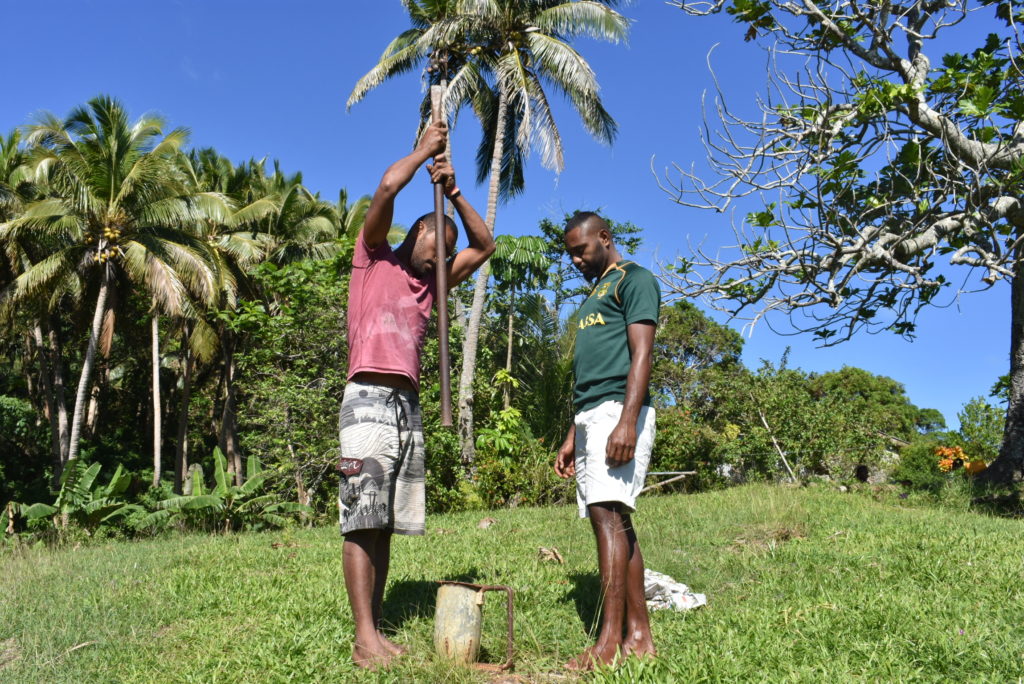
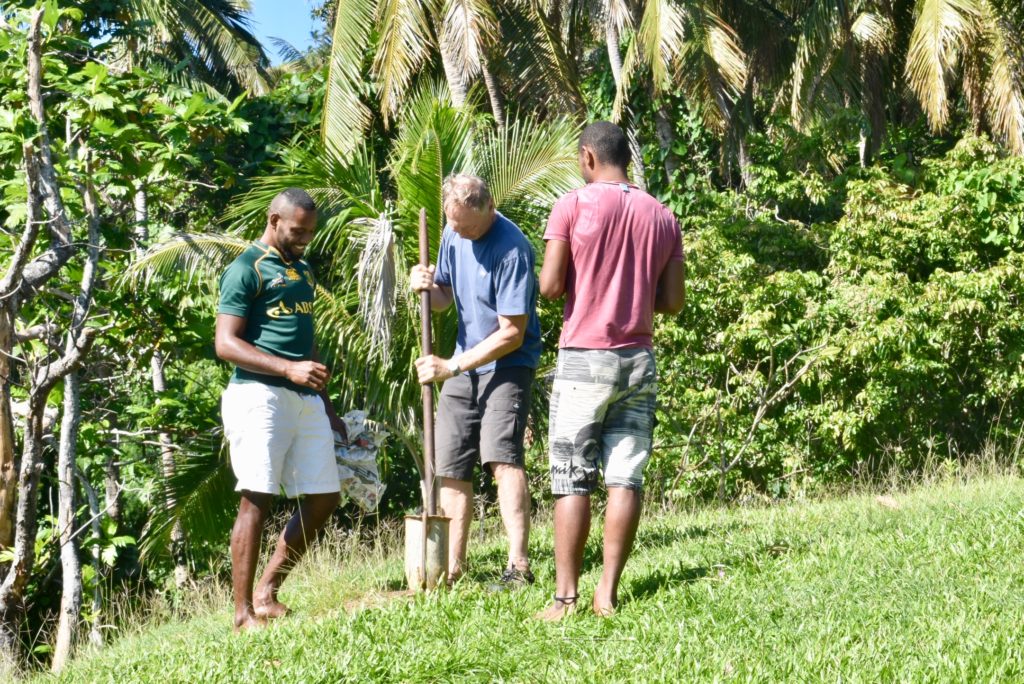
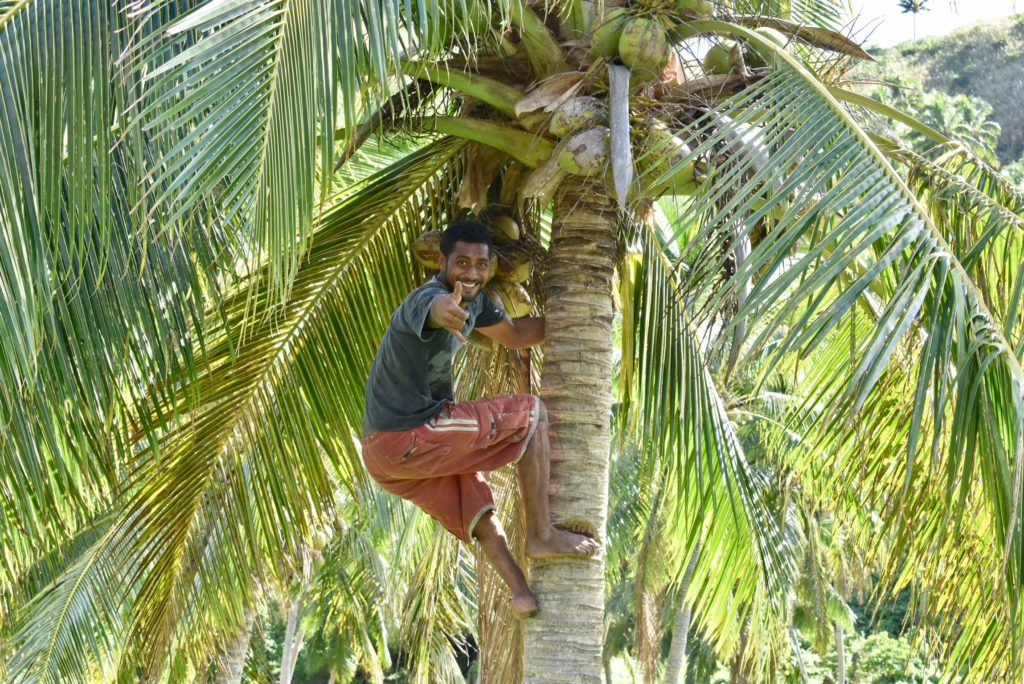
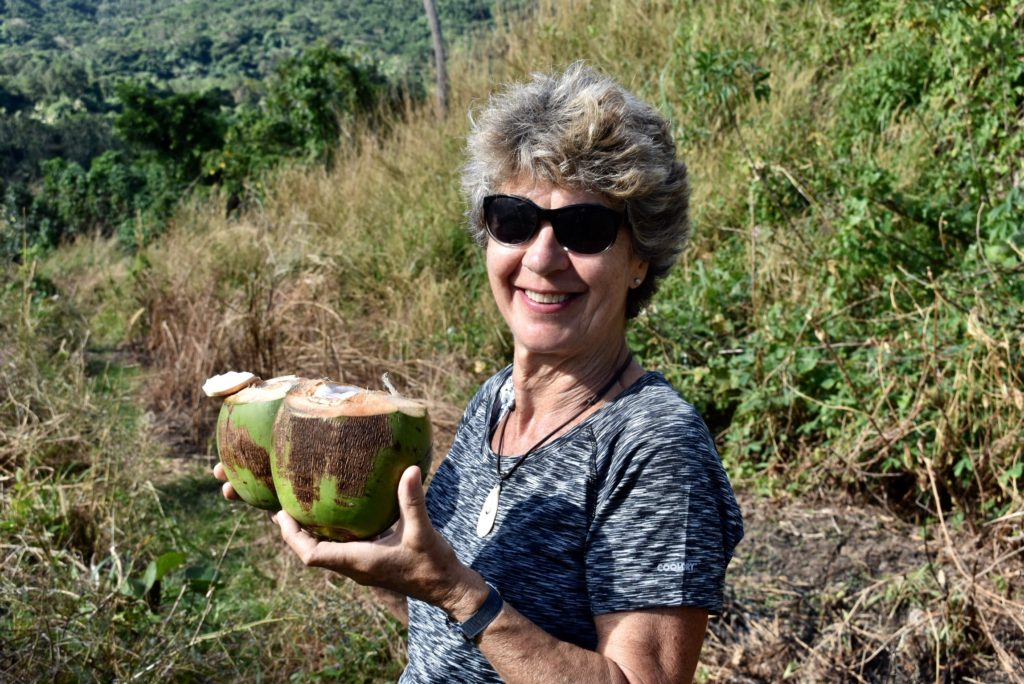
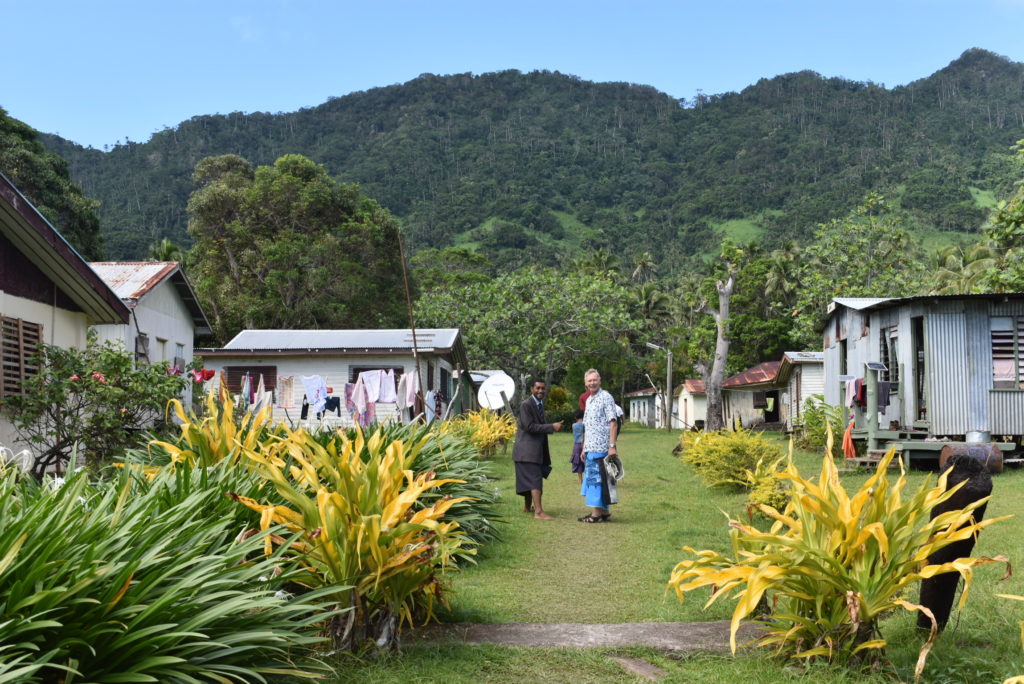
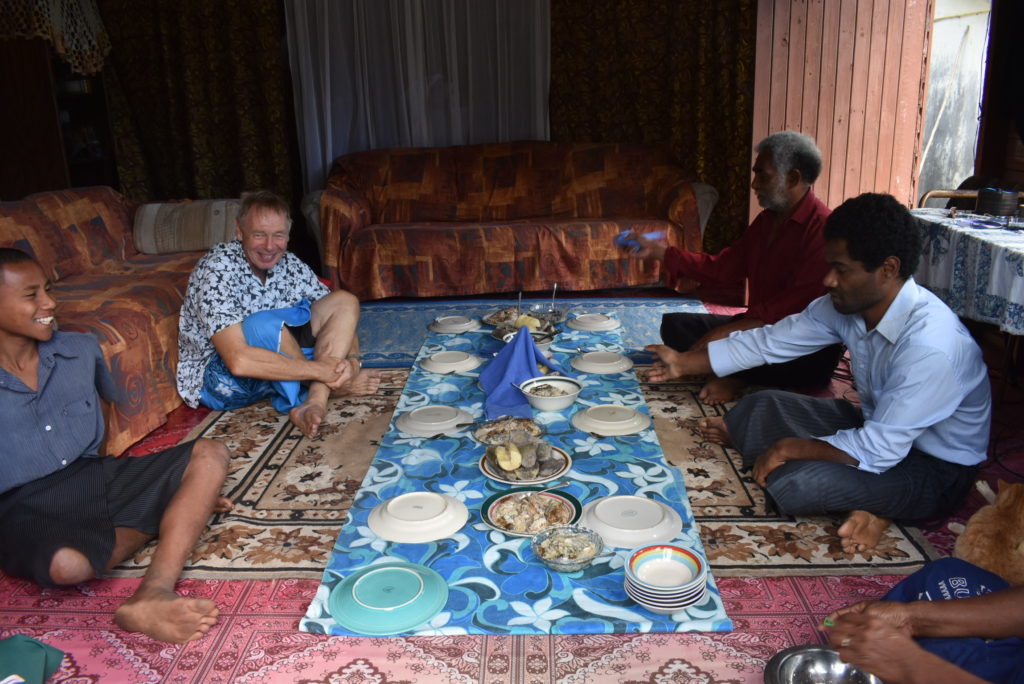
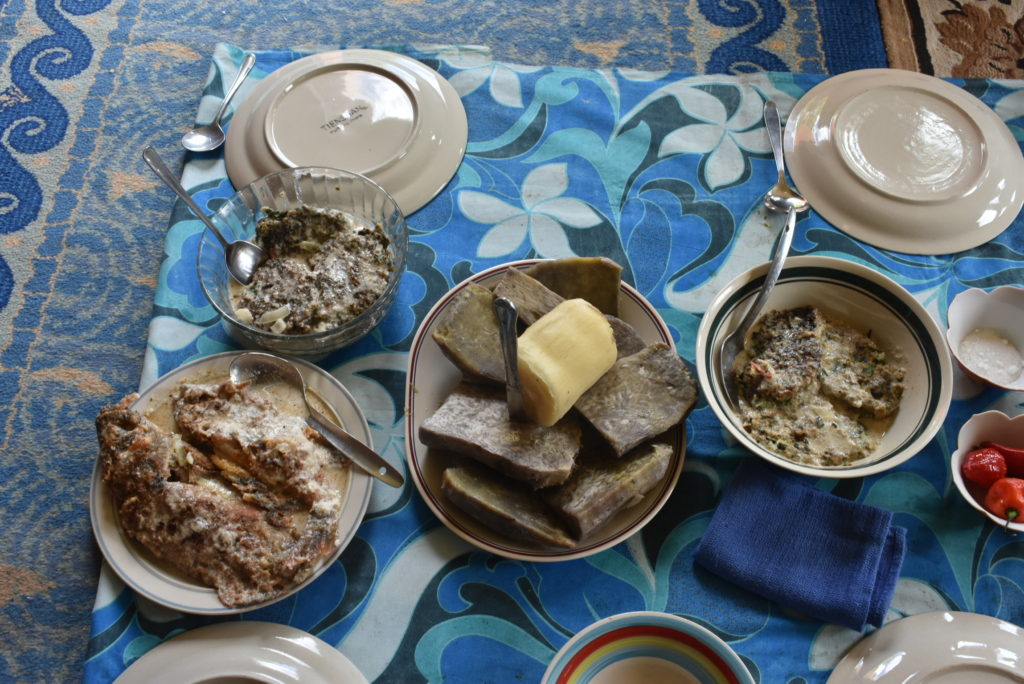
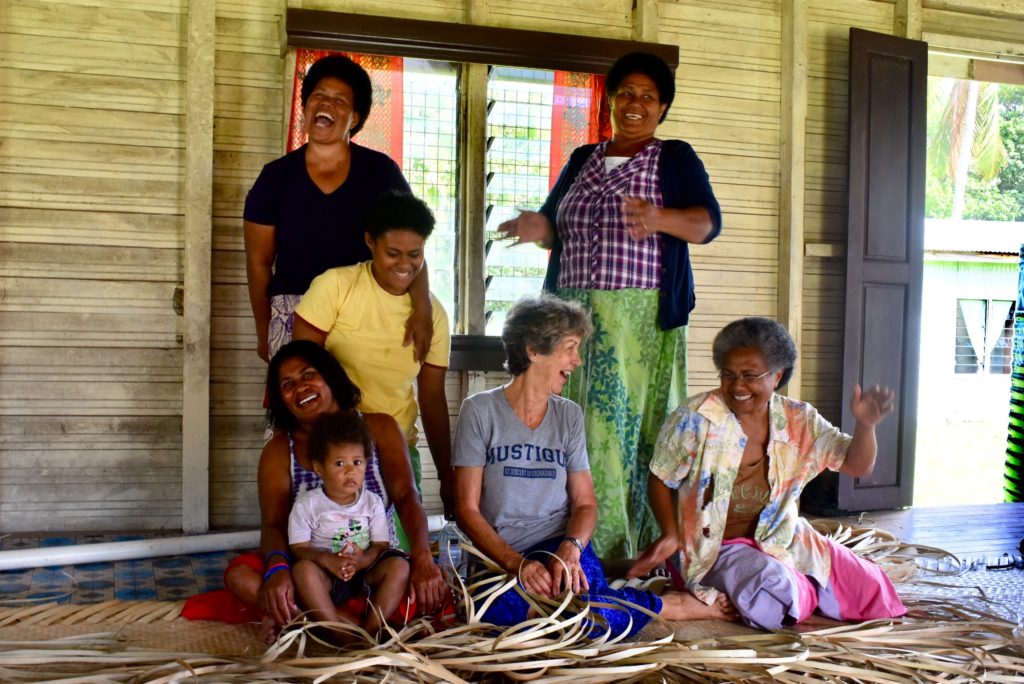
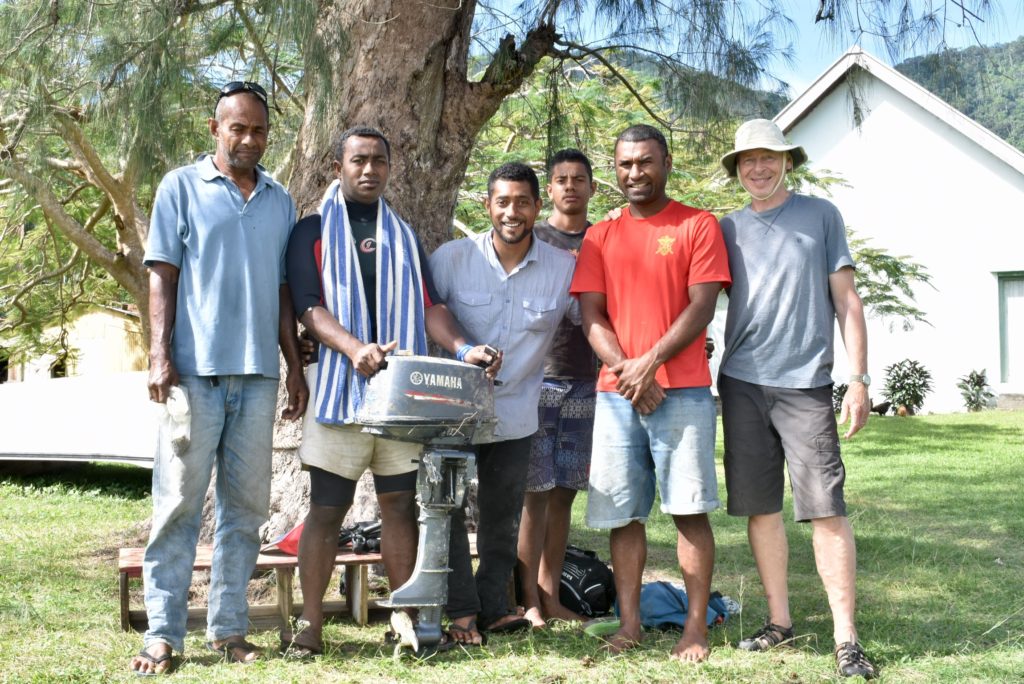
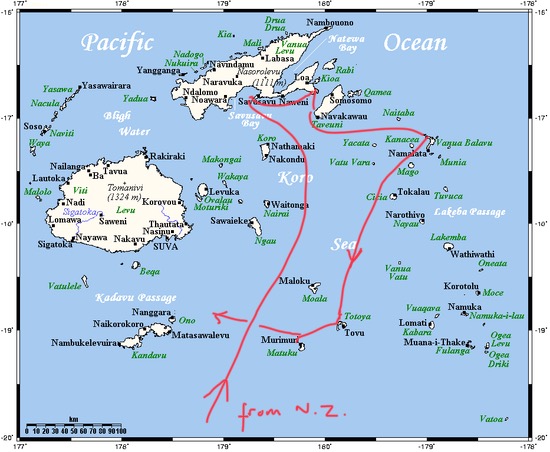
2 Comments
Richard & Jan
August 3, 2018 - 12:27 amHi Annie & Hugh
So pleased to hear that you are enjoying Fiji, we are looking forward to visiting next year.
It was very generous of you to buy the village a coconut grating machine which will enable them to earn much needed $ for their community.
Richard & Jan (Morpheus of London)
annie
August 3, 2018 - 4:17 amHi Richard and Jan. Lovely to hear from you. The chief didn’t get his propellor though 😉 xx